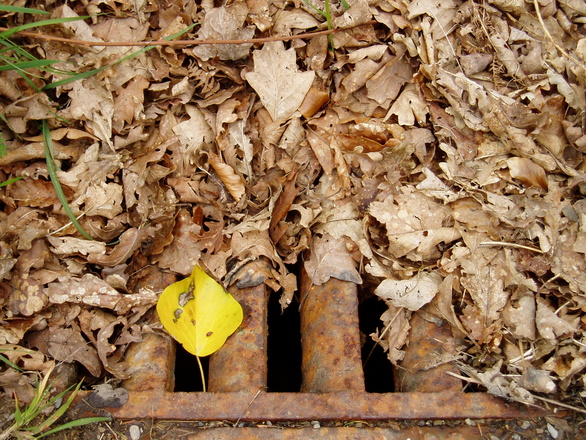Clearing blocked drains can often be a tougher job as the blockages will generally be bigger and can sometimes be a sign of a bigger problem such as a break in the pipe. However, you can tackle blockages yourself if you have the right tools and the inclination. Most drain clearing jobs will require a drain auger or drain rods. The latter can be expensive to buy, so hiring them could be a better option.
Responsibility for Blocked Drains
Drains are either publicly or privately maintained, depending where they are. Generally, the householder is responsible for problems and blockages in the drain between the house and where it meets the main sewer, and the local authority is responsible for all the rest. In many cases, several houses may share joint responsibility if more than one property drains into the system before it reaches the main sewer.
Causes of a Blocked Drain
 There are numerous things which might be causing your drain to be blocked, some of which are easier to fix than others.
There are numerous things which might be causing your drain to be blocked, some of which are easier to fix than others.
Food Waste – Disposing of food waste, oil and fat into your drain can cause a blockage. Fat particularly can solidify in the drain, building up until it completely blocks the system.
Non-Degradable Waste – Flushing wet wipes, condoms, nappies and other sanitary waste down the toilet is just asking for trouble. Toilet paper is designed to break down easily in water, whereas nappies and wet wipes are not.
Construction Damage – Broken pipes due to damage during the construction of a outbuilding or home extension are common. A cracked or broken pipe will not flow as smoothly as a sound one and blockages will almost certainly occur. You are legally required to inform your local authority if you plan to repair or alter any of the external drainage on your property.
Root Damage – Damage from tree roots is another common cause of drain blockages. This cannot be helped with existing trees, but you should always make sure that any newly planted trees are at least 3m away from any underground pipework.
Locating the Blockage
To find where the blockage lies, open the inspection chamber in your garden and take a look inside. If there is more than one on your property, open them all until you find a clear one. Now go back to the one before the clear one. This is where you will need to insert the rods.
Using Drain Rods
Screw two of the rods together and attach a work-screw head (drain rods usually come with a variety of heads for different blockages). Push it to the bottom of the chamber and feel for the channel at the bottom. Slide the head along this and into the pipe leading to the clear chamber. Add more rods as needed until you feel the blockage. Now turn the rods clockwise (otherwise they might unscrew from each other) and work the head into the blockage. If the water drops you will know the blockage is cleared. You can then use the plunger or scraper heads to remove any stubborn debris from the pipe.
If rodding the drain does not seem to shift the blockage, or the blockage feels very solid, you may have a bigger problem than a simple build up of waste and it is time to call in the professionals. Most drain clearing companies can insert a camera into the drain to see exactly what is causing the blockage.
Safety
If you have the inspection cover removed from a chamber, ensure that no children or animals are able to fall into it. If you have to leave the task for any amount of time, replace the cover. Also remember to wash your hands thoroughly after working on drains, toilets or sink traps.







